By Dr. Rita Fabbri
The therapeutic activity of the Angelica species is linked to its high content of coumarins.
Unlike other medicinal plants, scientific research has been based on plant extracts rather than on single constituents, and in numerous studies the Asian Angelica has been used. Below we report the most important pharmacological activities of Angelica.
Phytoestrogenic activity
Plant substances with phytoestrogenic action (phytoestrogens) are present in numerous medicinal plants and historically used in gynecological pathologies currently treated with synthetic estrogens. "Chinese and Japanese Angelica contain phytoestrogens and can be used in cases of high or low estrogen levels. Phytoestrogens have an amphoteric effect because they compete with estrogen on the cellular receptor: when estrogen levels are low, phytoestrogens play a" estrogenic action; when estrogen levels are high, the phytoestrogens occupying the same receptor sites as estrogens, reduce the overall estrogenic activity. The amphoteric effect of the phytoestrogens of Angelica may justify the clinical use of this plant in amenorrhea and menopause.
Angelica can be considered a uterine tonic based on these and other studies:
- It has been shown that the Japanese Angelica exerts a tonic effect on the uterus, initially causing an increase in uterine contractions and subsequently a relaxation of the muscles (13-14). Furthermore, the administration of Japanese Angelica to mice induced an increase in "use of glucose by the liver and uterus and an increase in uterine weight (14-15).
Cardiovascular activity
Traditionally, Angelica has never been used in the cardiovascular field, however this plant has a significant hypotensive effect. It has been shown that the dihydropyranocoumarins and dihydrofuranocoumarins of Umbrelliferous plants, including Angelica, have a marked vasodilatory action. , probably mediated by the interaction with calcium channels; therefore we can say that the "Angelica has a" slightly similar action to the calcium antagonists towards the coronary vessels.
Also in the cardiovascular field, this plant has antiarrhythmic and antiplatelet activity.
Spasmolytic activity
Angelica essential oil has been shown to relax the smooth muscles of the intestine and uterus, while the aqueous extract initially causes smooth muscle contraction and then prolonged relaxation. The traditional use of Angelica in the treatment of intestinal spasms and uterine cramps is therefore confirmed; its activity on the other smooth muscles also justifies the hypotensive effect (vascular smooth muscle) and the bronchodilator activity (bronchial smooth muscle) traditionally used in the treatment of asthma.
Analgesic activity
The Chinese and Japanese Angelica have shown analgesic, mildly sedative effects in several studies conducted on animals. The analgesic action was almost twice that of "aspirin. This" activity, combined with the muscle relaxant, explains the use. traditional of Angelica as a calming agent for headaches and menstrual pains.
Antiallergic and immunomodulating activity
For a long time Angelica has been used to prevent and treat allergic symptoms of sensitive or intolerant subjects. The effect is probably attributable to a selective inhibition of the production of allergic antibodies (IgE).
It has been shown that the coumarins of Angelica and the polysaccharides of the aqueous extract have immunomodulating activity: they increase the activity of leukocytes, stimulate the production of interferon and enhance the non-specific defense mechanisms (20-25).
These effects on the immune system seem to confirm the rather recent use of Angelica as a supportive agent in anticancer therapy.
Antibacterial activity
Chinese Angelica extracts were found to be active against gram-positive and gram-negative bacteria; the extracts of Japanese Angelica were found to be inactive. This different antimicrobial activity may be due to the different concentrations of essential oil in the extracts used. The essential oil of Angelica archangelica showed significant antifungal activity (in particular against Candida albicans) but not antibacterial.
With regard to the main clinical applications of "Angelica, we can summarize that currently the"Angelica archangelica e L"Angelica atropurpurea they are more indicated in the treatment of respiratory diseases, for their expectorant, decongestant and bronchodilator activity, and in gastrointestinal disorders such as aerophagia, meteorism, abdominal tension, intestinal spasms and in irritable bowel syndrome.
L"Angelica sinensis e L"Angelica acutifolia they are more useful in the treatment of menstrual disorders, in menopause (especially for hot flashes), in case of uterine cramps, in migraine of nervous origin and for immunomodulating activity.
However, further research would be needed to be conducted on humans.
Angelica can be taken as an infusion: 2-4 g of roots in 150 ml of boiling water, filter after 10 minutes and drink a cup of lukewarm infusion half an hour before meals; otherwise as a tincture, fluid or dry extract (26-27).
Watch the video
- Watch the video on youtube
Contraindications, special warnings and appropriate precautions for use, undesirable effects
Angelica-based preparations are contraindicated in pregnancy and lactation. They are also to be avoided in patients on anticoagulant therapy.
There may be rare cases of hypersensitivity involving excessive bleeding, occasional fever and a mild laxative effect.
Angelica contains particularly phototoxic substances (furanocoumarins), which can cause photodermatitis, inflammation and blisters after sun exposure, so it is not recommended for use in case of excessive exposure to sunlight or in any case during cosmetic treatments based on ultraviolet rays. Furanocoumarins are effective in the treatment of some forms of psoriasis and in vitiligo.
- Raimondo G.Russo: Middle Ages and Medicine, Medicine in the High Middle Ages, The Church and Magic. 2004; pag.6.
- Giorgio Cosmacini: The long art: history of medicine from antiquity to today. Rome - Bari: Laterza Publishers - 1997; p.129.
- Grieve M: A Modern Herbal. Dover Publications, New York, 1971. pp. 35-40.
- Duke JA: Handbook of Medicinal Herbs. CRC Press, Boca Raton, FL, 1985. pp. 43-45.
- Zhu DpQ: Dong quai. Am J Chin Med 15, 117-125, 1987.
- Opdyke DLJ: Angelica root oil. Food Cosmetics Toxicol 13 (Suppl.), 713-714, 1975.
- Lust J: The Herb Book, Bantam Books, New York, 1974. pp. 97-99.
- Duke JA and Ayensu ES: Medicinal Plants of China. Reference Publications, Algonac, MI, 1985, pp. 74-77.
- Krowzynski L, Polska Akad. Uniejetnosci, Prace Komiji Nauk Farm., Diss. Pharm., 2, 1 1950; Chem Abs, 45, 7304, 1951.
- Rovesti P, Riv.It.Ess.Prof. 36, 162, 1954.
- Ciamician and Silber, Ber., 29, 1811, 1896.
- Kerschbaum, Ber., 60, 902, 1927.
- Yoshiro K: The physiological actions of tang-kueri and cnidium. Bull Orien Healing Arts Inst USA 10, 269-278, 1985.
- Harada M, Suzuki M, and Ozaki Y: Effect of Japanese angelica root and peony root on uterine contraction in the rabbit in situ. J Pharmacol Dynam 7, 304-311, 1984.
- Hikino H: Recent research on Oriental medicinal plants. Ecom Med Plant Res 1, 53-85, 1985.
- Thastrup O, Fjalland B, and Lemmich J: Coronary vasodilatory, spasmolytic and dihydrofuranocoumarins. Acta Pharmacol Toxicol 52, 246-253, 1983.
- Tanaka S, et al .: Effects of “Toki” (Angelica acutiloba Kitawaga) extracts on writhing and capillary permeability in mice (analgesic and anti-inflammatory effects). Yakugaku Zassh 91, 1098-1104, 1971.
- Tanaka S, et al .: Anti-nociceptive substances from the root of Angelica acutiloba. Arzneim Forsch 27, 2039-2045, 1977.
- Sung CP, et al .: Effects of Angelica polymorpha on reaginic antibody production. J Natural Prod 45, 398-406, 1982.
- Casley-Smith JR: The action of benzopyrenes on the blood-tissue-lymph system. Folia Angiol 24, 7-22, 1976.
- Berkarda B, Bouffard- Eyuboglu H, and Derman U: The effect of coumarin derivatives on the immunological system of man. Agents Actions 13, 50-52, 1983.
- Ohno N, Matsumoto SI, Suzuki I, et al .: Biochemical characterization of a mitogen obtained from an oriental crude drug, tohki (Angelica acutiloba Kitawaga). J Pharmacol Dynam 6, 903-912, 1983.
- Yamada H, Kiyohara H, Cyong JC, et al .: Studies on polysaccharides from Angelica acutiloba. Planta Medica 48, 163-167, 1984.
- Yamada H, Kiyohara H, Cyong JC, et al .: Studies on polysaccharides from Angelica acutiloba. IV. Characterization of an anti-complementary arabinogalactan from the roots of Angelica acutiloba Kitagawa. Mol Immunol 22, 295-304, 1985.
- Kumazawa Y, Mizunoe K, and Otsuka Y: Immunostimulating polysaccharide separated from hot water extract of Angelica acutiloba Kitagawa (Yamato Tohki). Immunology 47, 75-83, 1982.
- Pignatti S: Flora of Italy (3 vol.). Edagricole - 1982.
- Zangheri P: Flora Italica (2 vol.). Cedam - 1976.
- Noé, Jody E: Angelica sinensis: a Monograph. Journal of Naturopathic Medicine, vol. 7, n.1, pp. 66-72, 1997.
- Mondello L, et al .: On the genuineness of Citrus essential oils. Part XL The composition of the coumarins and psoralens of Calabrian bergamot essential oil (Citrus bergamia Risso). Flavor and Fragrance Journal, vol. 8, pp. 17-24, 1993.
Other articles on "Angelica - Therapeutic Indications"
- Angelica - Botanical description and chemical composition
- Angelica
- Angelica in Herbalist: property of Angelica

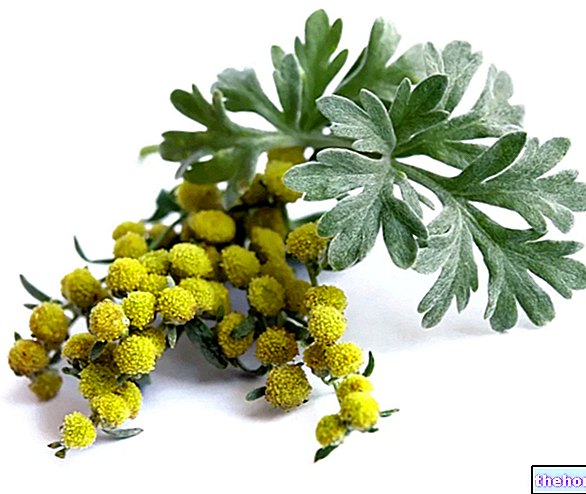
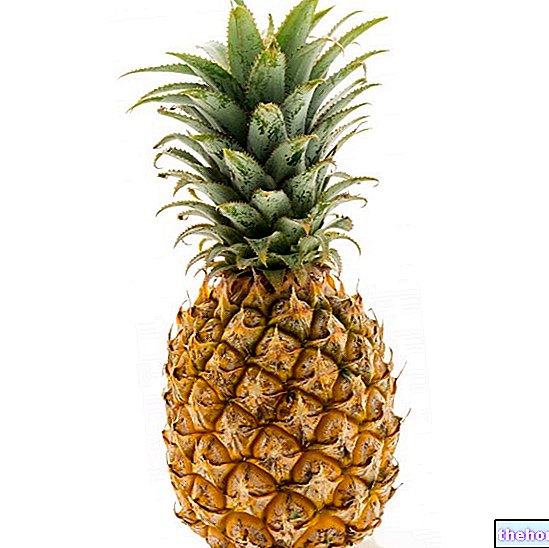
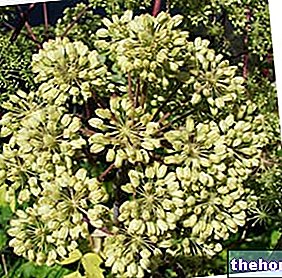

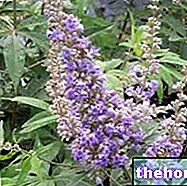
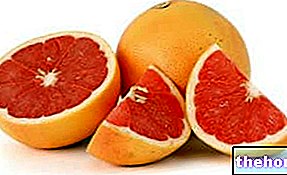









.jpg)











